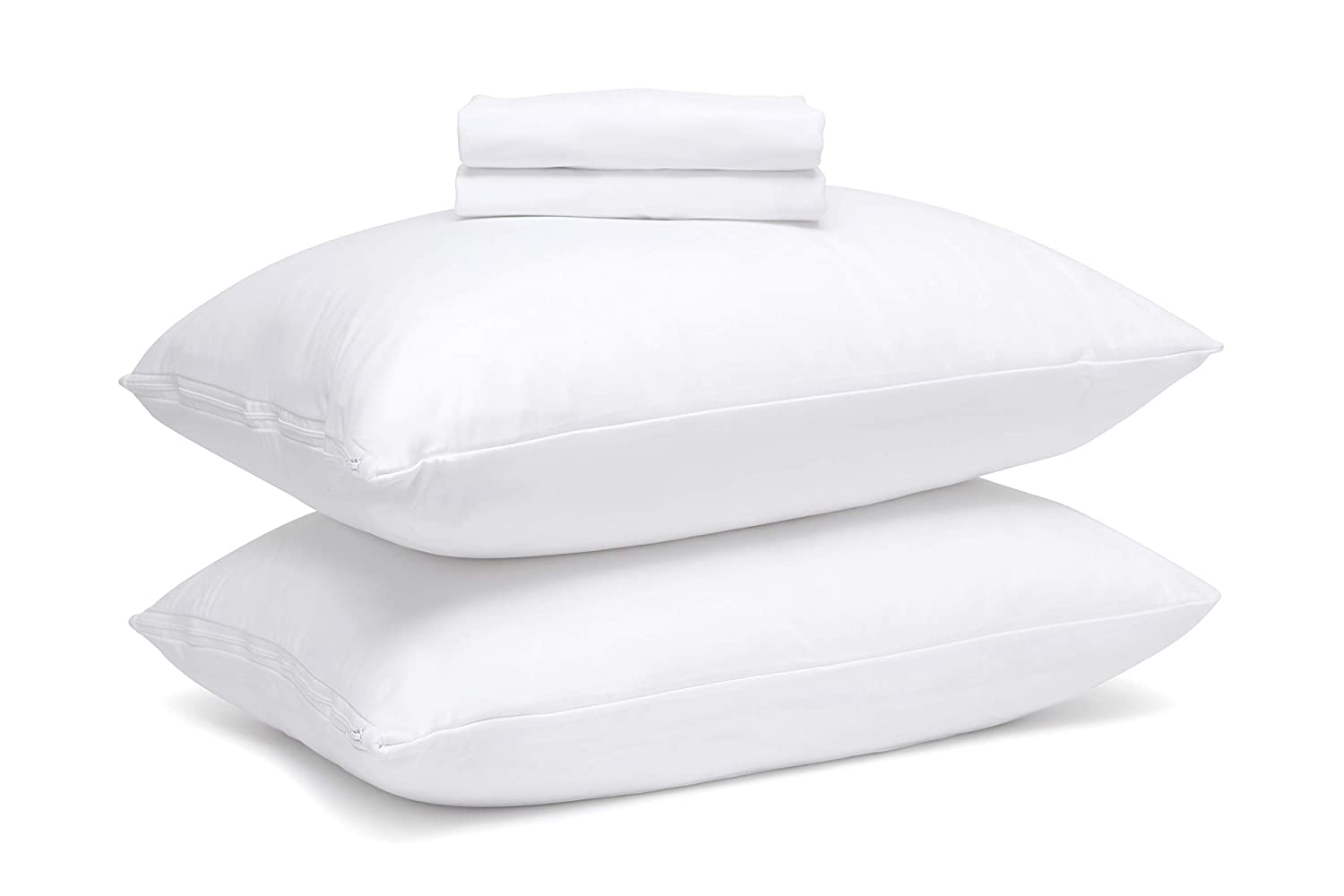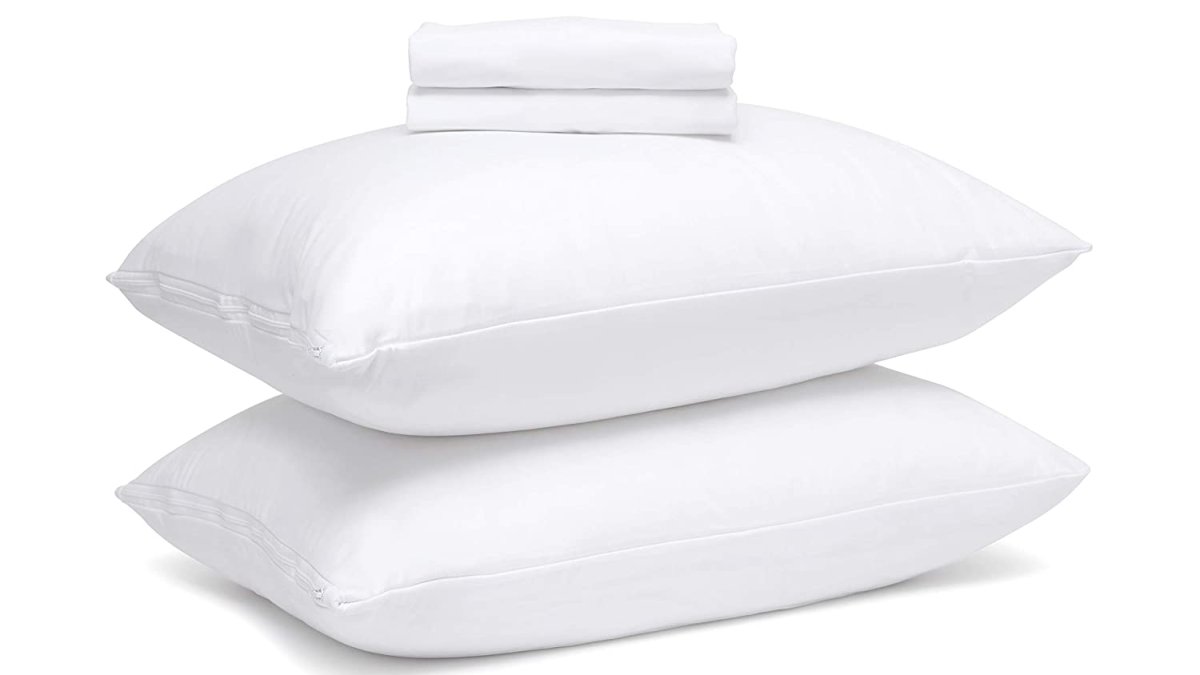
If you have spent enough time online or in a homeware store you may have across the concept of a pillow protector. While most people are familiar with a pillowcase and will often use one in their home not many people will use a pillow protector. What’s even more important though is that not many people realize what the difference between a pillowcase and a pillow protector is. In case you have been wondering which of the two you should use we have created this simple guide to help clarify the differences between these two types of pillow covers.
When do you use a pillow protector?
To understand if you should be using a pillowcase or a pillow protector, you need to understand the difference between what each of them does. Normally, a pillowcase is made up of a thin material that provides minimal protection for the pillow. A pillow protector is not at all like that. A pillow protector will be made of thick material or tightly woven fabric and will not allow the pillow to get soiled easily. If you want to know more about how these types of pillows work you can look at the Everlasting Comfort Waterproof Pillow Protectors Standard Size, 2-Pack – Zippered Design to Prevent Bedbugs, Dust Mites and Allergens.
A pillow protector does not only protect your pillow from damage, but it can also protect you from allergens. This is one of the most common reasons for people to use pillow protectors that are hypoallergenic.
An important thing to note about the pillow protector is that usually, you would not sleep on top of it. A pillowcase would go on top of the pillow protector. This is so you can wash the pillowcase without having to wash the much heavier duty pillow protector.
So, should I use a pillowcase or pillow protector?
The problem with this question is the “or”. In reality, you should be using both as they have entirely different functions. The pillow protector will help you maintain your pillow’s quality while also keeping it clean while the pillowcase will be what you are sleeping on and relaxing on while watching movies. While these two might look similar the things they do are inherently different and as such you should use both to ensure that your pillows remain protected.
When it comes to choosing your pillowcase, you will usually choose something made of thin and comfortable material. A pillow protector is exactly the opposite as it is usually made of thick tightly woven fabric that will protect your pillow. The pillow protector is normally placed under the pillow case and it acts as another, thicker layer of protection for your pillow. It will also help maintain the shape of your pillow which is guaranteed to be good for more long-term use of your pillows. Both of these are entirely necessary which is why it is recommended that you use both to ensure a night of better and more comfortable sleep.
Should I use a pillowcase or a Waterproof Pillow Protector?
If you have spent enough time online or in a homeware store you may have across the concept of a pillow protector. While most people are familiar with a pillowcase and will often use one in their home not many people will use a pillow protector. What’s even more important though is that not many people realize what the difference between a pillowcase and a pillow protector is. In case you have been wondering which of the two you should use we have created this simple guide to help clarify the differences between these two types of pillow covers.
When do you use a pillow protector?
To understand if you should be using a pillowcase or a pillow protector, you need to understand the difference between what each of them does. Normally, a pillowcase is made up of a thin material that provides minimal protection for the pillow. A pillow protector is not at all like that. A pillow protector will be made of thick material or tightly woven fabric and will not allow the pillow to get soiled easily. If you want to know more about how these types of pillows work you can look at the Everlasting Comfort Waterproof Pillow Protectors Standard Size, 2-Pack – Zippered Design to Prevent Bedbugs, Dust Mites and Allergens.
A pillow protector does not only protect your pillow from damage, but it can also protect you from allergens. This is one of the most common reasons for people to use pillow protectors that are hypoallergenic.
An important thing to note about the pillow protector is that usually, you would not sleep on top of it. A pillowcase would go on top of the pillow protector. This is so you can wash the pillowcase without having to wash the much heavier duty pillow protector.
So, should I use a pillowcase or pillow protector?
The problem with this question is the “or”. In reality, you should be using both as they have entirely different functions. The pillow protector will help you maintain your pillow’s quality while also keeping it clean while the pillowcase will be what you are sleeping on. While these two might look similar the things they do are inherently different and as such you should use both to ensure that your pillows remain protected.
When it comes to choosing your pillowcase, you will usually choose something made of thin and comfortable material. A pillow protector is exactly the opposite as it is usually made of thick tightly woven fabric that will protect your pillow. The pillow protector is normally placed under the pillow case and it acts as another, thicker layer of protection for your pillow. It will also help maintain the shape of your pillow which is guaranteed to be good for more long-term use of your pillows. Both of these are entirely necessary which is why it is recommended that you use both to ensure a night of better and more comfortable sleep.
Dr. Laura Thompson
Related posts
Stay connected
Today's pick
- Safety Essentials Every CNC Operator Should Follow DailyCNC machining demands precision, consistency, and discipline—but above all, it requires strict attention to safety. Whether you’re working with mills, lathes, routers, or grinders, every machine has the potential to cause serious injury if mishandled. That’s why CNC operators must follow safety protocols daily, no... The post Safety Essentials Every CNC Operator Should Follow Daily […]

